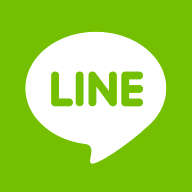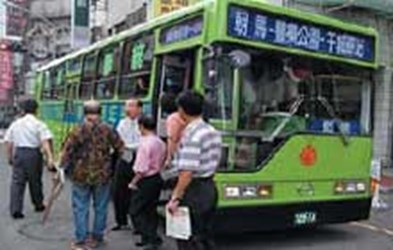Monthly use of Taichung city busses has surpassed 153,000 riders. That is an increase of 40,000/month, or 275% over three years. What does this jump in usage mean? If you are willing to give it another look, you'll find that Taichung city busses have really changed!The Taichung bus system had lacked competitiveness for a long time, and received much criticism from the people. Mayor Jason Hu moved heaven and earth to promote his public transportation policy, which was to encourage other providers and to have more routes added and to hire new talent. The city government allocated NT$10 million for 6 new "high potential" bus routes and tried its best to develop the "potential" for new riders.
Six months of free rides were offered with added benefits and training. People big and small, young and elderly tried the new routes, saying that they wanted to give the free rides a try. Many of them found it convenient and soon they became regular bus customers. The atmosphere of competition resulted in positive changes. First Tonglian Bus Company entered the Taichung market in 2002, then Capital Sanchong Bus company started routes in 2003, and purchased 200 new busses to join the fleet. Soon city busses could be seen all over Taichung City, adding to the overall look of the city.
In 2004, Jhuyeh and Cyuanhang companies entered the market. Within three years, the number of bus companies in the city climbed from two to five and routes from 38 to 54, with trips increasing from 23,458 a month to 100,710. The total number of riders skyrocketed over this time from about 40,000 per month to 153,000. Taichung's Dajhong Transportation routes are the main vein and artery of the city's traffic flow and may finally be of use to the people.
Taichung City Transportation Bureau said the city's public transportation system is poised for success and it is readying itself to face the challenges of the future as it promotes e-ticketing system and a customer service information network.There are various media on board providing news, bus information, and bus-related information. In but 8 months, IC cards (Taichung e-cards) came into service, further adding to the convenience of the system. People riding the train or city busses on major thoroughfares and regular routes may have a free transfer to a city bus, and Taichung is the first city in the nation to offer this service.
All Taichung city streets 20 meters wide have city bus service and the city has already begun promoting direct routes that remain on a single thoroughfare to add to the system's completeness. The first direct route, Jhonggang Line, has loyal passengers and the next one will be Wensin Line, servicing the metro green line, which will bring in passengers for the new high-speed railway and serve as a "warm up" for the upcoming green metro line. Another example is the Dakang District - an area that can be styled "Taichung’s flower garden." Dakang residents can ride the Dakang Tour Bus for a scenic tour of the area. This line runs by all the major sites of Dakang for passengers to appreciate.
Aside from having a total makeover, building up of the Taichung metro is an absolute necessity. Last year, Taichung City had already fought to have the green line added to the list of the central government's 10 New Construction Projects. The line will run along Songjhu Road in Beitun District, Yanwen New Road (Yanwensin Road), and Wesin South Road to the Taiwan High-Speed Railway station. The Minsitry of Transportation High-Speed Railway Station Construction Bureau has estimated that the project can begin next or the year after next. In the year 2011, the line will be up and running costing NT$28.7 billion.
Success seen in Parking
There has been much progress in the past couple of years over an issue that has been controversial for a decade: underground construction. As the costs of subterranean construction is severe, it is a strain on the city government resources. The Ministry of Transportation and Communications has provided its Overpass Plan. Once the railway is risen, traffic problems at the rear entrance to the train station and in the Southeast District may be solved. Both pubic transportation and overcrowding of small vehicles must be solved. One idea is to charge for on-street parking to keep the traffic moving and to make it possible for people to find parking spots. Citizens often remark that this route is really a pain in the neck!
Currently, Taichung City streets all have paid parking. For three years, paid parking spots went from 1,600 to 16,000 and the idea of having to pay for parking has become acceptable to the average citizen. Also, the City Government has encouraged BOT parking lots. The underground parking lot at JhongJheng Park was completed in March 2004 giving the city another 860 automobile parking spaces and 302 scooter spaces, solving the problem of needed parking for the Chinese Medical College Hospital and Sun-yat Sen Hall and Jhongyou Department Store commercial district. In addition, the BOT Fusing Parking Lot project for the Fengjia Commercial District has been approved and constriction began August 2005, with an additional 70 parking spots for autos and 71 for scooters. Nantun Elementary School BOT underground lot has been completed and initial plans have been drawn up. It will add 200 parking spaces.
Policies aimed to help the people
The "Instep Program" is to reduce the preponderance of hawkers, buskers and stands blocking parking spaces and obstructing traffic, aiming to allow vehicles and people to move in step.
Taichung City wants not only to improve the space but also hopes to eliminate clear away overgrowth and clean up the garbage in the way, giving citizens a clean place to be, in this "Clean Streets Program." As the city implements this program, it will implement the "Signage Program" to eliminate the illegal signage along Jhonggang Road and Jhongcing Road had taken care of some 1000 inappropriate signs.
The City Government hopes to provide safe conduits for families and students and reduce speeding with its "Clear School Streets Program" to allow students before and after school hours to access schools easily. This program is being implemented between the city government and schools, with the inclusion of parent teacher association volunteers to remove obstructions and garbage from the streets. It is estimated that 41 school districts need to be attended to.The city government has provided new bicycle routes at the cost of NT$265 million and has completed the first stage of 30 kilometers of trails accompanied with ecological, cultural, leisure and scenic construction that have receive high praises. Looking to the future, the City Government is pushing through various transportation projects. Aside from the core green line metro project, Taichung County Government is fighting to gain central government funds to build a complete metro system that includes plans for both red and blue lines.
As mentioned above, the City Government has managed to improve the quality of public transportation and has received praises from the citizenry as a result. New rules and developments have strengthened the public transportation system and helped traffic flow making travel in the city more and more convenient. With all the improvement, Taichung City has improved its attractiveness and contributed to the rapid development of this modern metropolis!

 Facebook
Facebook
 Twitter
Twitter
 LINE
LINE




